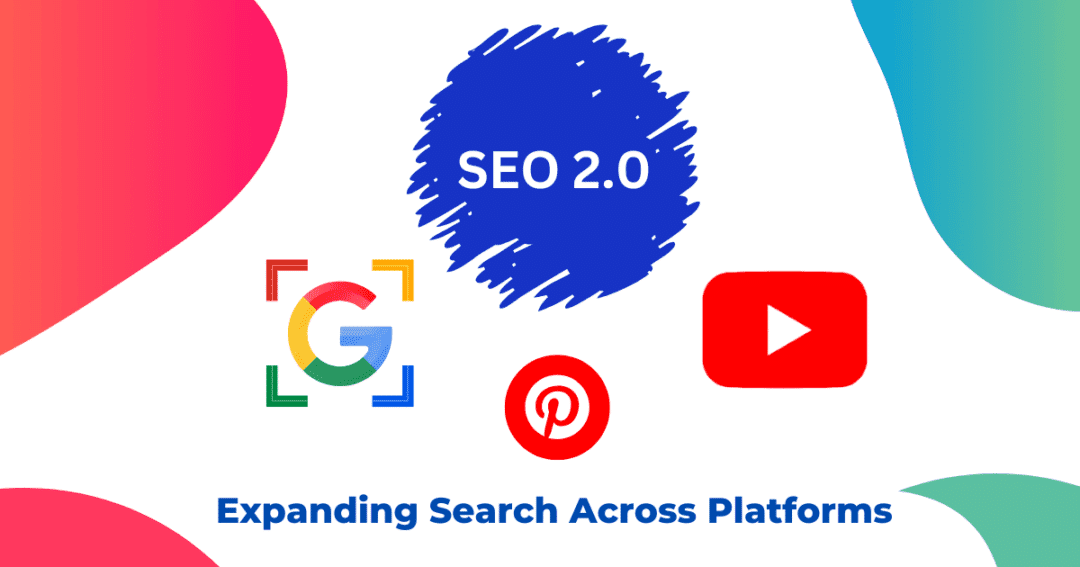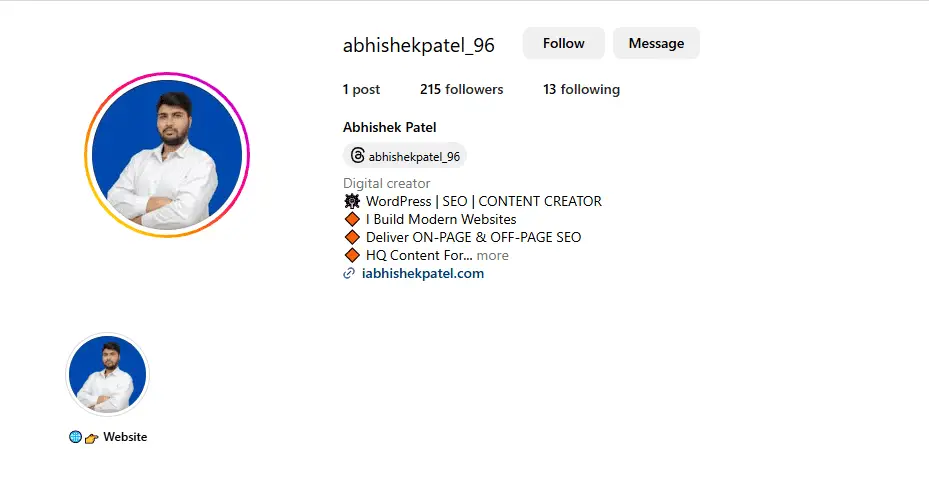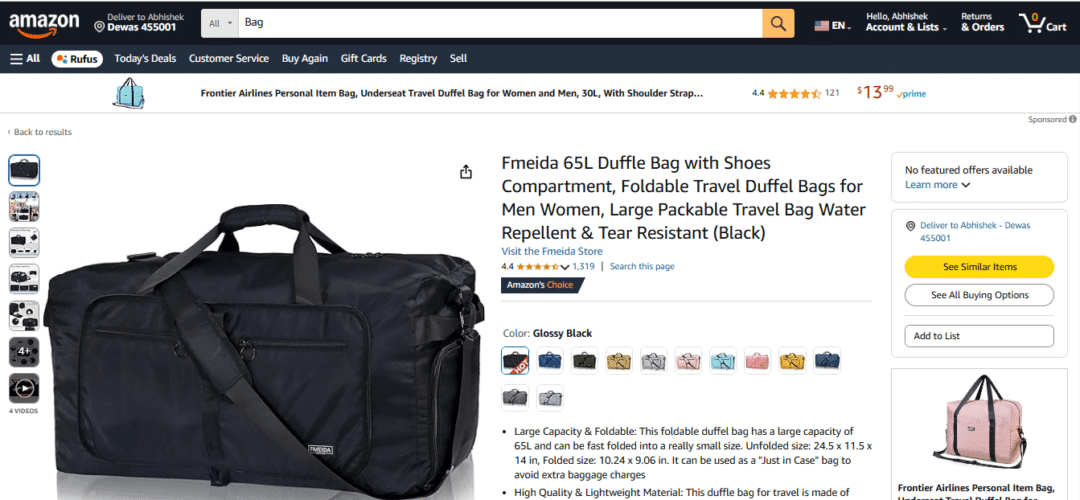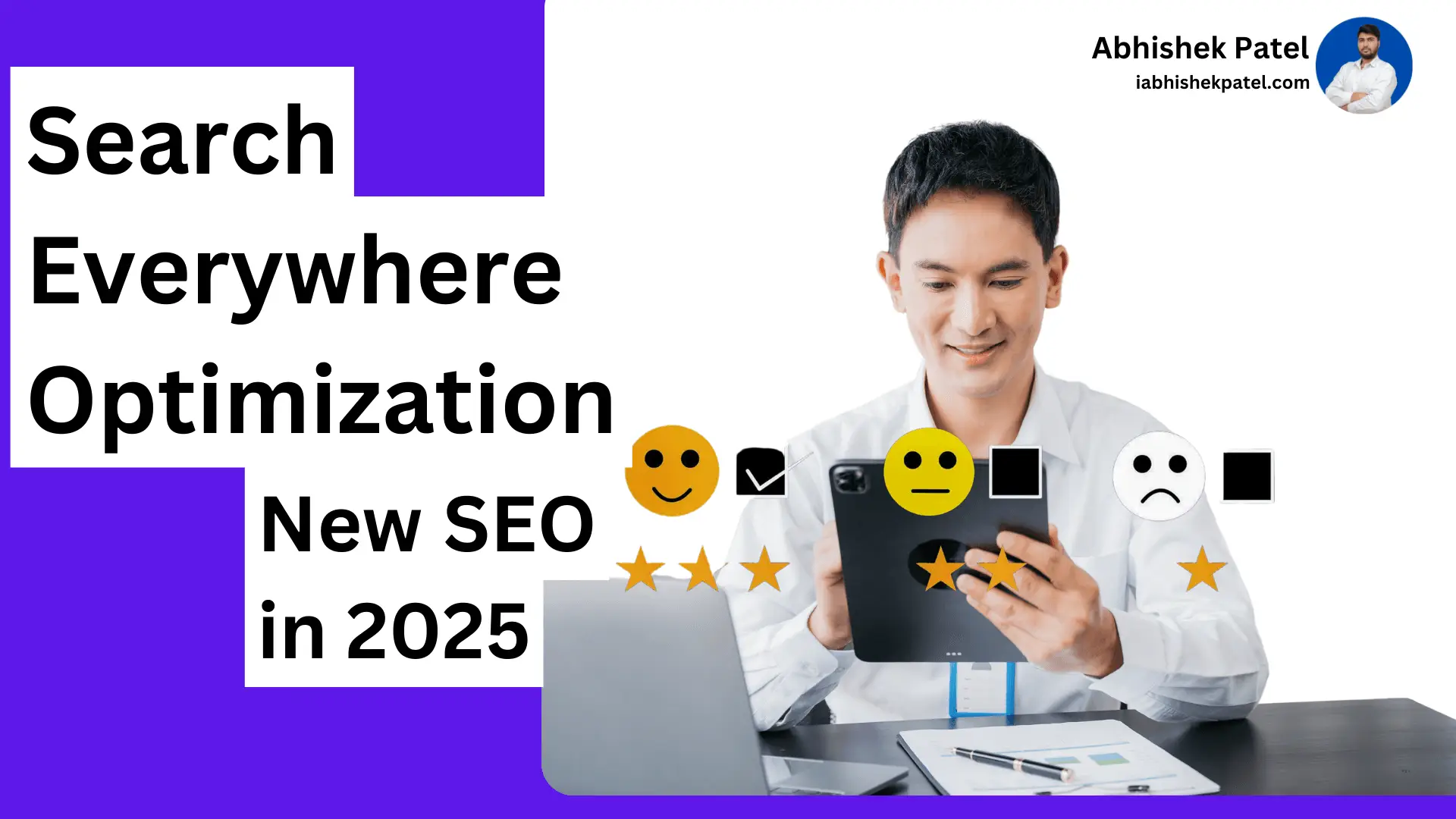The Traditional Search Engine Optimization (SEO) will become Search Everywhere Optimization (SEO 2.0) in 2025. If you use traditional SEO strategies, you will lose your traffic.
Now, Google is not always the first place to find answers. Other platforms, such as YouTube and ChatGPT also become search engines. If we look at the data from the last 10 years, Google is number one, but other social platforms like TikTok, YouTube, and ChatGPT have also become more popular after 2020.
The traditional name of SEO is Search Engine Optimization, but now it has become Search Everywhere Optimization. Traditional SEO is not enough for ranking and getting traffic. You’ll need to change your strategies so you get more traffic. SEO needs to evolve as the times change.
The Concept Of Search Everywhere Optimization (SEO 2.0): What is SEO 2.0?

In 2025, traditional SEO evolved into Search Everywhere Optimization. In this modern era, we call it SEO 2.0. While The Traditional SEO focuses on Google, the New SEO focuses on multiple platforms, ensuring more traffic and visibility. In today’s modern age, we all use different platforms to find the answers to our questions. That’s the reason we will Optimize our content for other Platforms.
If you learn This Modern SEO, you will get a lot of traffic, and your website will boost search rankings. We will start with simple points, and after that, I will guide you on “How to use modern SEO to Optimize your website for all other platforms.”
Why We Need Search Everywhere Optimization (SEO 2.0)
On my website, Abhishek Patel. I will use the latest SEO strategy, which is beneficial for my website. We use modern SEO to Optimize our content and website.
Since people use multiple social platforms and channels to find answers, I am also targeting them to get more traffic and leads. As we know, different audiences use different platforms. The new SEO or Search Everywhere Optimization helps reach a broader audience on the platforms they’re active. This approach ensures your presence on all active and demanding platforms where users need the service.

Each platform has a different user base. Every platform offers various engagement options, such as likes, shares and comments. These will build customer trust and relationship with the platform. These platform-specific features make every platform better and essential to customize strategies for better visibility.
In 2025, people use ChatGPT, Google and YouTube for Information. Today, users not only rely on Google or ChatGPT to find answers. They also use video and image-based searches to find the answer. They use platforms like YouTube, TikTok, Google Lens and Pinterest.
As we know, videos grab more attention and get more traffic. Search engines like Google rank these video tutorials, Podcasts and Social posts, which means you will use this strategy to increase your search real estate by creating video tutorials and social posts. Modern SEO 2.0 helps rank better in search engines by implementing strategies.
Modern SEO is good for Optimizing your content and website for the future. There isn’t a need to change anything. You need to clarify your Optimization approach for all other platforms, and it will give benefits.
Read Also: Select a perfect WordPress theme 2025
Where to Focus for Effective Search Everywhere Optimization

As we know what is SEO 2.0 and why we need it, let us move on to our next section.
Below, we divided into categories: traditional search, social media, AI-based searches, visual search, E-commerce and Shopping Platforms, and Niche channels.
Traditional Search
Traditional search contains traditional SEO Optimization for search engines like Google and Bing. So, don’t forget to Optimize your content for these search engines. These search engines create pillars for your website visibility and organic growth.
Traditional SEO is still good. And if you use it with The New SEO, it will be more beneficial.
Google And Bing
YouTube, Google and Bing are the traditional search engines that are popular all over the globe. Google is still the number one search engine in the world that contains more than 65% of all web traffic. Bing and Google are the two search engines with different features and users. Figures say Google has 1 billion active users daily. If we compare it with Bing, it has 100 million. Google contains 89.9 % of the market share in search engines.
Optimizing your SEO still sends you a surprising amount of traffic. You can Optimize your SEO by considering these three points:
- Create high-quality backlinks.
- Create high-quality and clean content (unique and plagiarism-free).
- Invest some time in technical SEO for better results.
In 2024, we see a new SERP feature AI overview. The AI overview contains authoritative answers to common questions.
YouTube
YouTube is the second most popular search engine. It provides information through video tutorials. These will make YouTube an integrated part of Search Everywhere Optimization. You Must Optimize your content if you create Video content.
You will use keyword-rich titles, descriptions and tags to Optimize YouTube SEO. Use a proper heading that aligns with your YouTube video content. You will also use platforms like Answer The Public to research questions. Embed your YouTube video on the website, which improves SERP visibility.
Social Media
Social Media are the common platforms after search engines. People use social media to explore content and sometimes for knowledge purposes. When researching social platforms, I see average social media user visits over more than five social platforms Each month.
According to Google research, 40% of young people use social media like Instagram and TikTok to find answers. When you use the Right Social SEO strategy, you will get the maximum profit from it. Consider these points to Optimize your social profile:
- Choose a profile name that looks logical and legitimate.
- Write a bio that highlights your profession.
- Use keywords to Optimize your bio.
- Create content that is trending.
- Use high-quality images for posts.
- Create reels and videos in the proper size format.
The Optimization strategies are different for every social platform.
Read Also: Why WordPress Plugins Are Free
Instagram & Facebook
Instagram & Facebook are not just social networking platforms. Billions of people are using these two social platforms. You can use these platforms to create Brand authority, discovery and engagement. The younger audience uses these platforms to search for content.
You will Optimize your Instagram and Facebook SEO by:
- Use keywords in your username and profile bio for profile Optimization.
- Use location tags and hashtags for visibility.
- Create engaging posts, reels and videos to grab user’s attention.
- Post high-quality images and videos, and add alt text to improve accessibility and ranking in Instagram searches.
- Only use niche-related hashtags for the best optimization.

AI-based searches
People also use AI chatbots to find answers. ChatGPT and Google Gemini are the two most popular AI chatbots. As we know, every house has a base. AI tools like ChatGPT and Gemini are the base of Modern SEO.
AI chatbots like ChatGPT are the most popular tools. Generative Engine Optimization (GEO) and Large-Language Model (LLM) Optimization focus on ensuring that AI chatbots recommend and recognise your brand as the trusted source of information within your industry.
If your AI-SEO Optimization is correct, these AI chatbots will use your website as a source of information. This technique helps them to find accurate answers to user needs.
But how do you do this?
You will start by building your brand identity and reputation through high-quality content and expert contributions. You can use an FAQ section in your article to answer the most common questions asked or searched by your target audience. Creating authoritative and well-structured content helps AI chatbots recommend your website or brand as a trusted informational source.
Visual search
Visual search means users use images rather than text to find answers. Instead of typing the keyword, Users upload an Image, and AI algorithms analyze the image elements, such as text, colour, and shapes, to find the relevant information. Results include related websites, products and even local stores.
Visual search is the best option for users who don’t want to write keywords for their search. It offers faster and more accurate results for products, landmarks, and objects. Platforms like Pinterest reported that visual searches increase user interaction rates by 25% to 30%.
Visual searches are very beneficial for E-commerce websites because e-commerce websites use product images. If a user uses the product image and finds the product, then this will increase your website visibility. So, Optimize your images before using them on your website. Use alt text in all images. Implement schema markup to make images more discoverable. Using WEBP image format for image compression will improve loading time.
E-commerce and Shopping Platforms
E-commerce platforms are places to connect with customers. Google shopping is a powerful tool. These will be integrated directly into search results, providing a convenient way to compare product prices and sellers to the users. If you Optimize your product for Google shopping, ensure your product reaches users who search for those items. You will use these key Optimization techniques for Google shopping:
- Use schema markup to provide information about the product, such as price, availability, and reviews. This will help your product appear in rich snippets.
- Include clear details about shipping, costs and return policy. Google uses these details to rank.
- Request the customers to review your service. Positive reviews improve trust and credibility.
- Use accurate images, descriptions and titles. Integrate keywords in the description and title naturally for Optimized SEO.
Amazon
Amazon is the most visited and popular platform. These will make Amazon a crucial platform for product visibility. Amazon is the major platform for e-commerce products and acts as a search engine. If you want your listed product to rank, follow these simple steps to optimize for the Amazon platform:
- Use keywords in the title and description for optimization.
- If your product starts selling and customers enjoy it. Ask them to leave a review.
- Invest time to build high-quality images for the best visuals.
Here is an example with an image:

As you see the product is a bag, with proper use of keywords in the title with multiple phrases and features.
Steps to Implement Search Everywhere Optimization
After learning all about the basics, we are now in our next step which is implementing SEO 2.0. So, get ready for the final and important steps:
- Identify your audience behaviour: If you want the best results, use analytics tools like Google Analytics to learn about user behaviour. Learn where user spend their time, not just what they search for, What they buy, What they listen to, and Where they shop.
- Audit your current search position: If you just started, skip this step, but if your website has an audience and getting traffic from Google. Find the gaps and areas where you need improvements. Check the performance of social media, search engines and other platforms.
- Learn Platform-specific features: Understand how users engage with the platform. Research the platform and use proper SEO strategy for Optimization.
- Create Multi-Platform Content: If you sell a product, create videos, graphics and blog posts related to the product and upload them according to the platform. Note that everything you use is optimized correctly.
- Use the same usernames for consistent branding: Whichever platform you want to Optimize, maintain your branding. These mean using the same username and profile name for the best Optimization.
These are just small things that help to get higher reach and engagement.
Challenges and How to Overcome Them
As in the last steps, we highlight the concept of Search Everywhere Optimization, Steps to Implement SEO 2.0, and where to focus for Search Everywhere Optimization and Traditional SEO. Most people are now able to Optimize their SEO with these but here are some challenges that you may know before starting. Our experience tells us about these, some challenges are:
Resource limitations
This is the main challenge for every website owner. The Resource limitations include budget, time and workspace. Small businesses and startups, may struggle to manage all in a very short time. If you have a low budget and time, use your limited resources and time to focus on the platform where your audience is active.
Let’s take an example If you are a content writer and your audience uses Instagram. Just focus on building a strong Instagram profile and post 2 to 4 posts, 2 to 3 reels every week and go live every 2 to 4-week intervals. This will engage your audience to connect with you and see your work. You will build your website to showcase your Writing skills.
The limitation also comes from the team’s end, this will affect your platform Optimization SEO strategy. Remember that you will always expand your efforts as your resource grows and the audience reaches you.
Changes In Algorithms
If we go back to a decade, according to those days Google, Facebook and Instagram algorithms changed nowadays. If you use last year’s SEO strategies that work is that work, there is almost half of a chance.
So, what do we do now? The answer is simple: You may use new strategies according to platform algorithms, that work well with the latest SEO practices. The platform releases continuous, Updates and changes to algorithms for the best user experience. You will stay updated with these. That will help you boost your visibility and search ranking.
Platform-based content
Let’s take an example: if you are using Instagram as a social platform and want to post an article, that’s not possible. You must create relevant content according to the platform, such as Posts, Reels, IGTV live, etc.
You must create your content on different platforms to succeed. For example, Instagram reels are more viral than YouTube shorts if they catch user attention. So, focus on creating engaging videos for Instagram reels.
FAQ related to SEO 2.0
Search Everywhere Optimization is a process to optimize your website or content for multiple platforms. This will helps you to reach broader audience.
Just follow these simple steps to improve your Search Everywhere Optimization:
1. Create multiple platform profiles, such as Instagram, Facebook and Pinterest.
2. Create strong bio and use your website link in Bio.
3. Post content daily with high-quality images.
4. Use proper titles and description that define the post.
5. Engage with people by replying their comments.
You will target Instagram, Pinterest, ChatGPT, Facebook and Google shopping for the best results. These platforms have millions of traffic and easy for Search Everywhere Optimization.
At the end, I am happy to say that if you follow this article you will get the results you expect. You Will use these techniques to Optimize your Traditional SEO to The SEO 2.0.
Checkout My YouTube Video Page